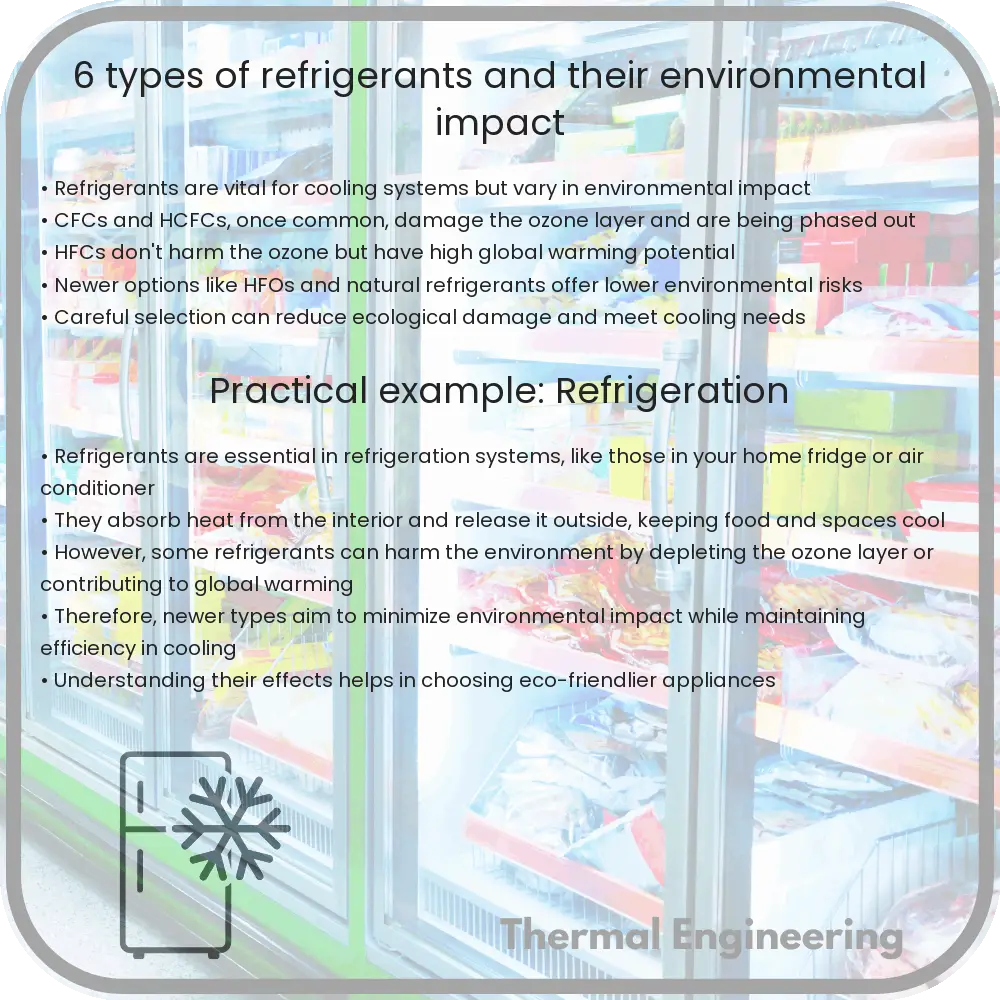Explore the role and environmental impacts of different refrigerants in HVAC-R systems including CFCs, HCFCs, HFCs, and alternatives like CO2 and ammonia.

Introduction to Refrigerants and Their Environmental Impact
Refrigerants play a critical role in heating, ventilation, air conditioning, and refrigeration (HVAC-R) systems, enabling essential processes like air conditioning and refrigeration. However, the types of refrigerants used can have a significant impact on the environment. This article explores six common refrigerants and considers their environmental implications.
1. Chlorofluorocarbons (CFCs)
Historically, CFCs like R-12 were widely used in refrigeration and air conditioning systems. However, their high ozone-depletion potential (ODP) and substantial global warming potential (GWP) led to severe environmental concerns. The detrimental impact of CFCs on the ozone layer, which protects the Earth from harmful ultraviolet radiation, spurred international agreements such as the Montreal Protocol to phase out their use.
2. Hydrochlorofluorocarbons (HCFCs)
HCFCs, such as R-22, were introduced as transitional substitutes for CFCs. They have lower ODP compared to CFCs but still pose considerable environmental threats due to their relatively high GWP. Under the Montreal Protocol, the production and consumption of HCFCs are in the process of being phased out globally, with complete cessation targeted within the next decade.
3. Hydrofluorocarbons (HFCs)
HFCs like R-134a, R-32, and R-410A, which contain no chlorine, do not deplete the ozone layer and were adopted as alternatives to CFCs and HCFCs. However, these refrigerants have high GWPs, contributing to climate change. The Kigali Amendment to the Montreal Protocol has initiated a global phase-down of HFCs to address their climate impact.
4. Hydrocarbons (HCs)
Natural refrigerants like propane (R-290) and isobutane (R-600a) belong to this category. HCs have very low GWPs and zero ODP, making them environmentally friendly alternatives. However, their flammability requires careful handling and design modifications in refrigeration and air conditioning systems to ensure safety.
5. Carbon Dioxide (CO2)
CO2 (R-744) is an emerging alternative with minimal environmental impact. It has a GWP of 1, reflecting minimal contribution to global warming. CO2 operates under higher pressures than other refrigerants, which necessitates robust system components but offers efficiency benefits, particularly in colder climates.
6. Ammonia (NH3 or R-717)
Ammonia is an efficient refrigerant with a GWP of 0 and minimal ODP. It has been used in industrial refrigeration for many years due to its excellent thermodynamic properties. Similar to hydrocarbons, ammonia’s toxicity and flammability require strict engineering controls and safety practices in its application.
Conclusion
The shift from environmentally harmful refrigerants like CFCs and HCFCs to more sustainable alternatives is crucial in the fight against ozone depletion and climate change. Each refrigerant type has specific properties that influence its environmental impact, system design, and safety requirements. Understanding these properties helps in selecting the appropriate refrigerants that meet both operational needs and environmental regulations.